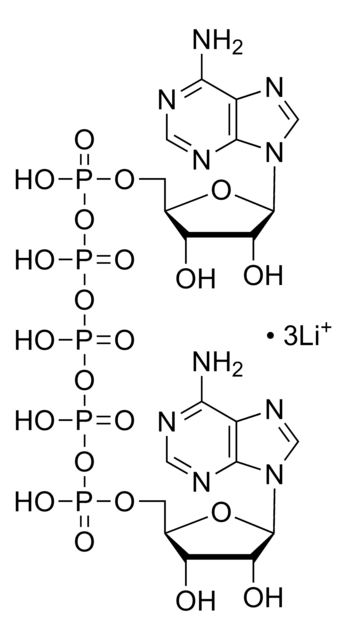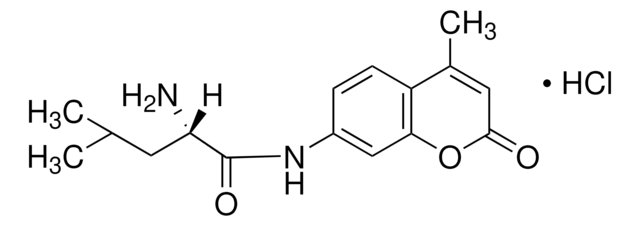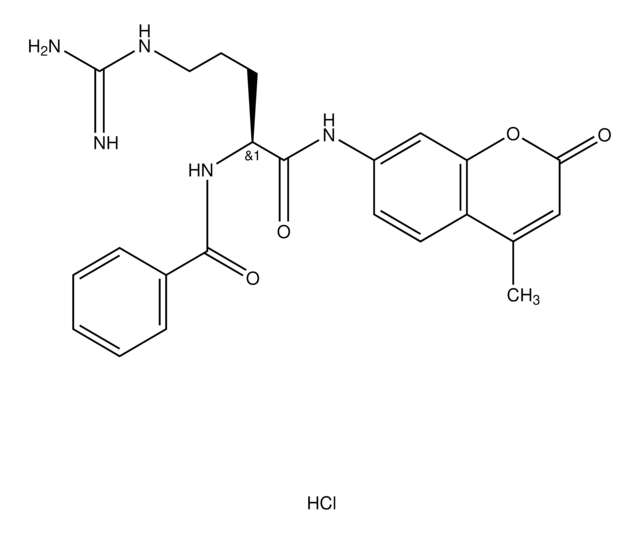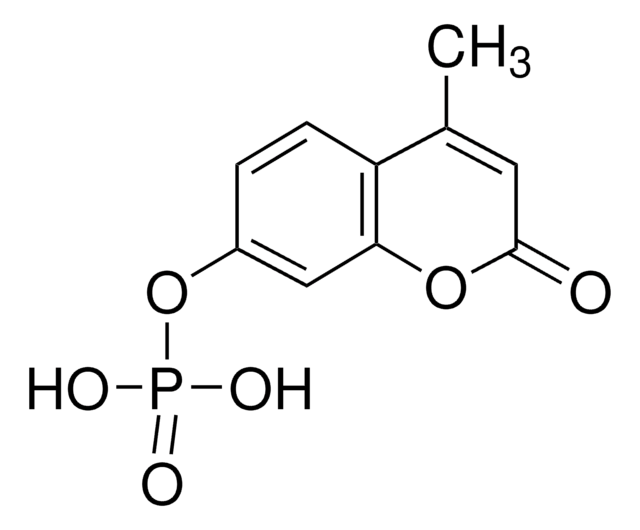Kluczowe dokumenty
A2027
L-Arginine-7-amido-4-methylcoumarin hydrochloride
cathepsin H substrate
Synonim(y):
4-metylo-7-kumaryloamid argininy
About This Item
Polecane produkty
Próba
≥97% (TLC)
Formularz
powder
rozpuszczalność
acetic acid: water (1:1): 50 mg/mL, clear, colorless to light yellow
temp. przechowywania
−20°C
ciąg SMILES
Cl.CC1=CC(=O)Oc2cc(NC(=O)[C@@H](N)CCCNC(N)=N)ccc12
InChI
1S/C16H21N5O3.ClH/c1-9-7-14(22)24-13-8-10(4-5-11(9)13)21-15(23)12(17)3-2-6-20-16(18)19;/h4-5,7-8,12H,2-3,6,17H2,1H3,(H,21,23)(H4,18,19,20);1H/t12-;/m0./s1
Klucz InChI
PFLMUQNBZRXRHD-YDALLXLXSA-N
Szukasz podobnych produktów? Odwiedź Przewodnik dotyczący porównywania produktów
Zastosowanie
Działania biochem./fizjol.
Kod klasy składowania
11 - Combustible Solids
Klasa zagrożenia wodnego (WGK)
WGK 3
Temperatura zapłonu (°F)
Not applicable
Temperatura zapłonu (°C)
Not applicable
Środki ochrony indywidualnej
Eyeshields, Gloves, type N95 (US)
Wybierz jedną z najnowszych wersji:
Masz już ten produkt?
Dokumenty związane z niedawno zakupionymi produktami zostały zamieszczone w Bibliotece dokumentów.
Klienci oglądali również te produkty
Nasz zespół naukowców ma doświadczenie we wszystkich obszarach badań, w tym w naukach przyrodniczych, materiałoznawstwie, syntezie chemicznej, chromatografii, analityce i wielu innych dziedzinach.
Skontaktuj się z zespołem ds. pomocy technicznej








